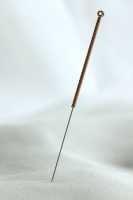PainRelief.com Interview with:
Giovanni Barassi PhD
Center for Physiotherapy, Rehabilitation and Reeducation
Center of Sports Medicine
“G.d’Annnunzio” University
Chieti, Italy

PainRelief.com: What is the background for this study?
Response: Our research started with the observations made during standard clinical practice concerning the inefficiency of standard physiotherapeutic procedures used for pain relief in chronic nonspecific low back pain, a scourge of modern times, particularly in industrialized countries. Therefore, the need has arisen to search for new approaches in the evaluation and treatment of musculoskeletal problems.
Chronic low back pain is clinically manifest as the pain between rib margins and folds of the inferior gluteus muscle. It usually results from an incorrect lifestyle, typical of modern society having too little physical activity, too much psycho-physical stress, and poor management of body weight. On the background of osteopathic medicine, we developed a concept of the dysfunctional flow of body fluids as a plausible underlier of low back pain, referring by and large to spine bony structures.
It has been shown that alterations in afferent activity coming from visceral, structural, and emotional nociception converge in the same metamers of the spinal cord, resulting in information noise and jam. The final motor output of the reflex arc encompasses somatic, myofascial, and connective tissue responses, with the inevitably added influence of the autonomic nervous system. There also are studies demonstrating the importance of interpreting myofascial dysfunction, not as an isolated local phenomenon but rather as an expression of the central nervous activity. Therefore, a concept has been shaped of somatic and myofascial dysfunction, currently gaining increasing recognition among physicians, osteopaths, and physiotherapists, the professionals dealing with tissue and joint manipulation. The practical crux of the issue is the identification of the “major dysfunction” site, expressing the specific spinal information jam.
Continue reading








